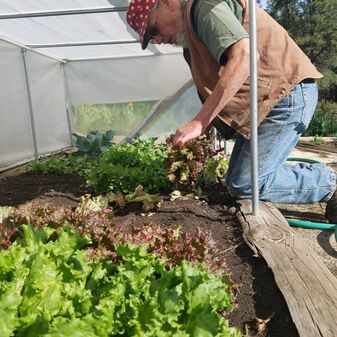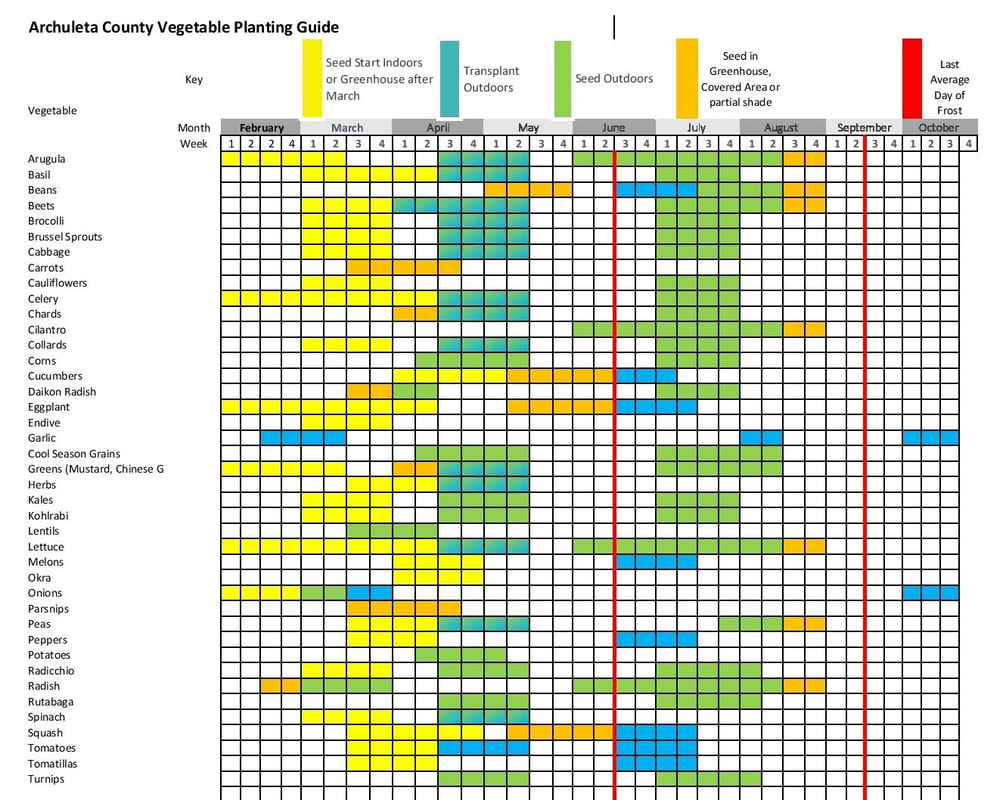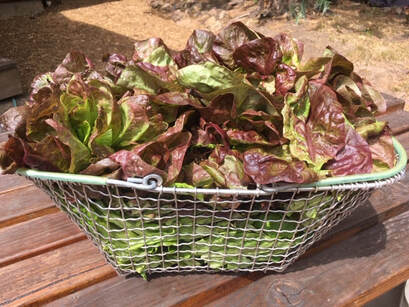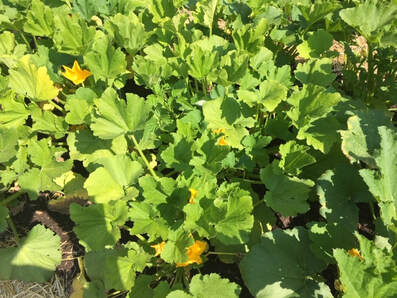Growing and producing food is at the heart of our food system. Everything that we eat starts out being grown or produced and eventually makes its way to our plates. Food can be grown, like fruits and vegetables, or produced, like meat or eggs. At the center of our local food system are the farmers, ranchers, backyard gardeners, and others who grow and produce food in our community. In order to have more locally produced food available to eat, we need more people growing and producing food. That could mean new or expanded farms or ranches, or more people becoming interested in planting a backyard garden or growing a tomato plant on their deck.
Plant Now | Plant More
Food Production in Archuleta County
If you are interested in increasing food production in Archuleta County and would like assistance with your grow dome and/or outside garden, please email [email protected] to learn about our garden education and consultation services.
|
|
|
Video Library
|
|
|
|
|
|
|
|
|
Other Resources
A Year in the Pagosa Springs Garden
January and February
Later in June
Rest for you and the garden
January and February
- Review last year’s garden notes- What worked? What didn’t work? What will you try or do differently this year?
- Create a planting plan for the season ahead- think about quantities, succession plantings, varieties, spacing, and crop rotation
- Inventory and order seeds
- Order row cover if needed
- Plan your setup for starting seedlings indoors if you don’t already have one (i.e. greenhouse space or lights/heat mats) and make sure you have enough trays and pots
- Place seed potato order with Archuleta County Extension
- Purchase/mix your own potting soil
- 3rd week in March: Sow indoor trays of eggplants, peppers, onions, parsley, celery root
- 4th week in March: Sow indoor trays of tomatoes
- 2nd week in April: Sow indoor trays of chard, kale, broccoli, cauliflower, cabbage, lettuce, pac choy, flowers, basil, flowers
- Begin preparing soil in garden beds- pull out any remaining debris from last year, test soil and add amendments accordingly, loosen soil with a digging fork or broadfork
- Late April: Pot up tomatoes, peppers, eggplants
- Begin hardening off cold-hardy transplants- move outside during the day and inside at night. Place in the shade for the first couple days, increasing sun exposure gradually. Watch for increased water needs.
- Transplant cold-hardy crops such as chard, kale, broccoli, cauliflower, cabbage, lettuce, pac choy, onions, leeks, parsley. Set up frost/wind/sun protection/covering over these beds!
- Direct seed peas, beets, carrots, parsnips, radishes, salad turnips, spinach, cut lettuce, arugula, mustard greens. For heat-sensitive crops like radish, lettuce, arugula, spinach, sow a quantity that will supply you for about 2 weeks, and then plan to sow another succession every 2 weeks.
- Plant potatoes
- Test run irrigation system, make repairs as needed
- Transplant tomatoes, peppers, eggplants, basil, flowers
- Direct seed summer squash, winter squash, cucumber, beans, melons, flowers
- Sow next succession of salad crops
Later in June
- Trellis peas
- Hill potatoes
- Mulch
- Thin beets and carrots
- Trellis and prune or cage tomatoes
- Trellis beans
- Trellis cucumbers
- Tie peas
- Hill potatoes again
- Mid-July: cut off water to garlic
- Late July: harvest garlic and hang or lay out indoors to cure
- Harvesting and processing for canning/freezing
- Sow final successions of salad greens by early August
- Mid to late August: cut off water supply to onions
- Early September: harvest onions and hang or lay out indoors to cure
- Harvest root crops for storage (can take some light frosts)
- Harvest winter squash and lay out to cure in the sun or a warm place indoors (harvest before frost)
- Trim back perennial herbs, dig up bulbs that won’t overwinter
- Drain irrigation system
- Plant garlic
- Apply compost/mulch to garden beds
Rest for you and the garden
COOL/COLD/FROST HARDY VEGETABLES
Cool season vegetables are crops that grow better in the cool times of the year. Most prefer to grow in temperatures under 75 degrees. Below is a list of cool season crops that are easy to grow, some with fairly quick germination to harvest times.
Cool season vegetables are crops that grow better in the cool times of the year. Most prefer to grow in temperatures under 75 degrees. Below is a list of cool season crops that are easy to grow, some with fairly quick germination to harvest times.
|
Brassicas (Mustard family):
|
Hardy Greens:
Vines:
|
Herbs:
Roots:
|







